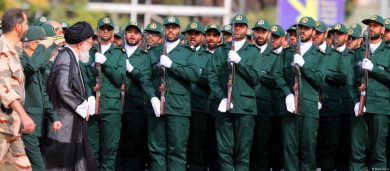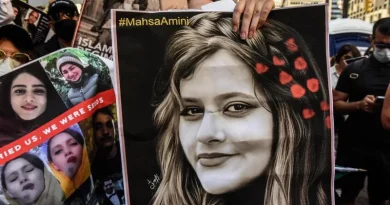In contemporary Iran, the hijab is more than a piece of cloth—it is a symbol of state control, resistance, and a deeply personal matter of identity and choice. For many Iranian women, the act of wearing or removing the hijab is loaded with cultural, political, and spiritual implications. When enforced by the state, what was once a personal religious expression becomes a tool of oppression. When rejected in protest, it becomes a powerful act of defiance.
This article explores the cultural power of choice surrounding the hijab, especially in the Iranian context, and examines how mandatory hijab laws, enforced by the Islamic Revolutionary Guard Corps (IRGC) and morality police, have turned personal freedom into a political battleground. We also highlight how the global movement—especially the women-led uprising in Iran—has reframed the hijab debate through the lens of freedom, feminism, and resistance.
1. Hijab in History: Between Faith and Freedom
A. The Origins and Meaning
The hijab has varied meanings across Muslim societies. For some women, it is an expression of modesty, religious devotion, or cultural identity. In places where it is freely chosen, it is empowering and spiritual.
However, in states like Iran—where hijab has been legally mandated since 1983—its meaning has become entangled with power, patriarchy, and control.
B. Pre-Revolution Iran and the Shift in Policy
Before the 1979 Islamic Revolution, Iran was more socially diverse in its approach to dress codes. Women were free to choose whether to wear the hijab. After the revolution, Ayatollah Khomeini’s regime made hijab mandatory for all women, regardless of personal belief or religious conviction.
This imposition was framed as a moral duty, but it was deeply political—used to reinforce Islamic rule and suppress Western influence.
2. The Islamic Republic and Compulsory Hijab
A. The Law and Its Enforcers
Iran’s mandatory hijab laws are enforced by the morality police (Gasht-e Ershad) and the IRGC, both of which monitor and punish women who don’t comply. Penalties range from verbal warnings and fines to imprisonment, beatings, and social expulsion.
This policy has become a tool to:
• Control women’s public presence
• Suppress bodily autonomy
• Reinforce the regime’s ideological authority
B. Mahsa Amini and the Spark of Defiance
The 2022 death of Mahsa Amini, a 22-year-old Kurdish-Iranian woman who was arrested by morality police for “improper hijab,” sparked an unprecedented wave of nationwide protests.
Her death was a tipping point. Iranian women began publicly removing their hijabs, cutting their hair, and sharing acts of defiance on social media, knowing the risks.
The slogan “Women, Life, Freedom” became a rallying cry across Iran and the globe, redefining the hijab not just as a cloth—but as a symbol of resistance.
3. The Hijab as a Symbol of State Power
A. Weaponizing Modesty
The IRGC and state authorities have weaponized the hijab to enforce:
• Public surveillance
• Behavioral conformity
• Gender segregation
Under this regime, the hijab became a tool to police morality and control women’s bodies, reinforcing a male-dominated power structure.
B. The IRGC’s Role in Enforcement
As a military, intelligence, and economic powerhouse, the IRGC plays a central role in:
• Suppressing protests related to hijab laws
• Arresting women for defying dress codes
• Manipulating media to shame and blame unveiled women
The crackdown is not about religion—it’s about maintaining control and stifling dissent.
4. Defiance Through Choice
A. Choosing to Remove the Hijab
In Iran, removing the hijab is more than a fashion statement—it’s an act of civil disobedience. It challenges the state’s authority and declares:
• “My body is my own.”
• “You do not control my identity.”
• “I choose freedom over fear.”
This movement is often led by young women, many of whom have grown up under strict laws but now reject them, inspired by social media, underground art, and global solidarity.
B. Choosing to Wear the Hijab Freely
It’s equally important to note that choice also means the freedom to wear the hijab. Many Iranian women who are religious oppose state enforcement but choose to wear the hijab as an expression of faith and autonomy.
The key issue is compulsion, not the hijab itself. Feminism rooted in Iran’s context respects all expressions—as long as they’re freely chosen.
5. Cultural Resistance and Creative Expression
A. Art, Film, and Poetry
Iranian women have turned to artistic expression to challenge the hijab laws:
• Visual art showcasing unveiled portraits.
• Poetry and spoken word about resistance and womanhood.
• Independent films that subtly defy censorship.
These works not only resist the regime’s narrative—they reclaim the hijab debate as one of freedom and feminism.
B. Digital Defiance
Social media campaigns like:
• #WhiteWednesdays (encouraging women to wear white scarves in protest)
• #MyStealthyFreedom (sharing hijab-free images anonymously)
• #No2Hijab (amplifying stories of defiance)
These have become global platforms for Iranian women to assert their autonomy, share stories, and gain international support.
6. The Global Conversation
A. Western Misunderstandings
In the West, debates around the hijab are often oversimplified. Some view it solely as oppression, others as purely empowerment. In Iran, both perspectives can be true—depending on context, experience, and choice.
Understanding the nuance is essential. Iranian feminists are not fighting against Islam—they are fighting for the freedom to choose.
B. Solidarity Without Erasure
Global allies must:
• Center Iranian voices, not speak over them.
• Avoid turning Iranian women into symbols of victimhood.
• Respect the diversity of opinion among Iranian women—both secular and religious.
Solidarity means amplifying voices, supporting freedom of expression, and demanding accountability from regimes like the Islamic Republic.
7. The Future: Hijab as a Choice, Not a Weapon
The future many Iranian women envision is one where:
• The hijab is optional, not enforced.
• Dignity replaces shame.
• Autonomy is respected, whether one wears a scarf or not.
This fight is not about fabric—it’s about freedom, identity, and human rights.
Conclusion
The hijab, once a personal and spiritual choice, has become in Iran a battleground for freedom. In the hands of the regime and the IRGC, it is used to control, intimidate, and erase individuality. But in the hands of defiant women, it has become a powerful symbol of resistance.
Whether they choose to wear it proudly or remove it boldly, the message remains the same:
Join Our Newsletter!
Stay informed with the latest updates, news, and ways to take action in the fight for justice and global security. Sign up now to get updates delivered straight to your inbox!





